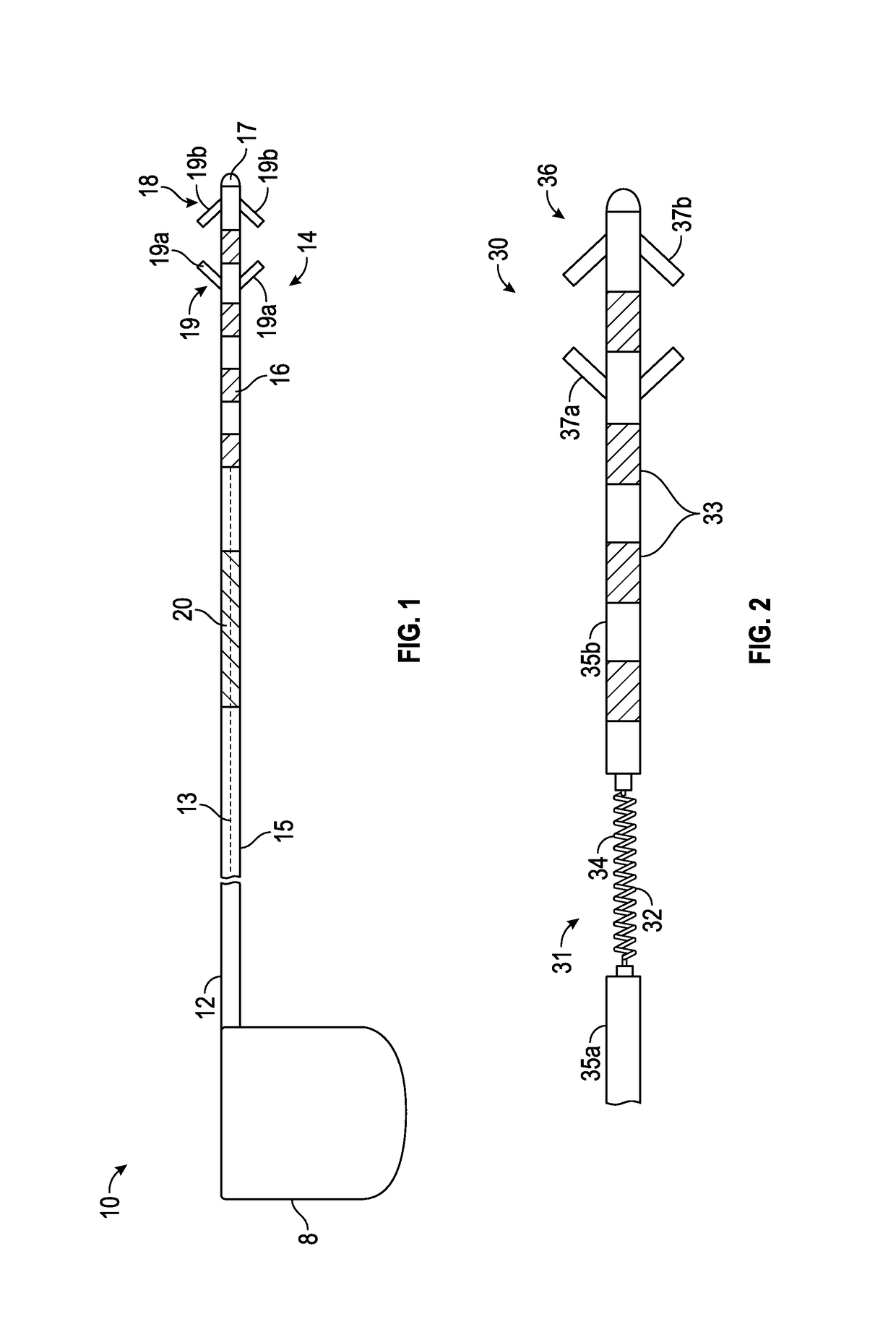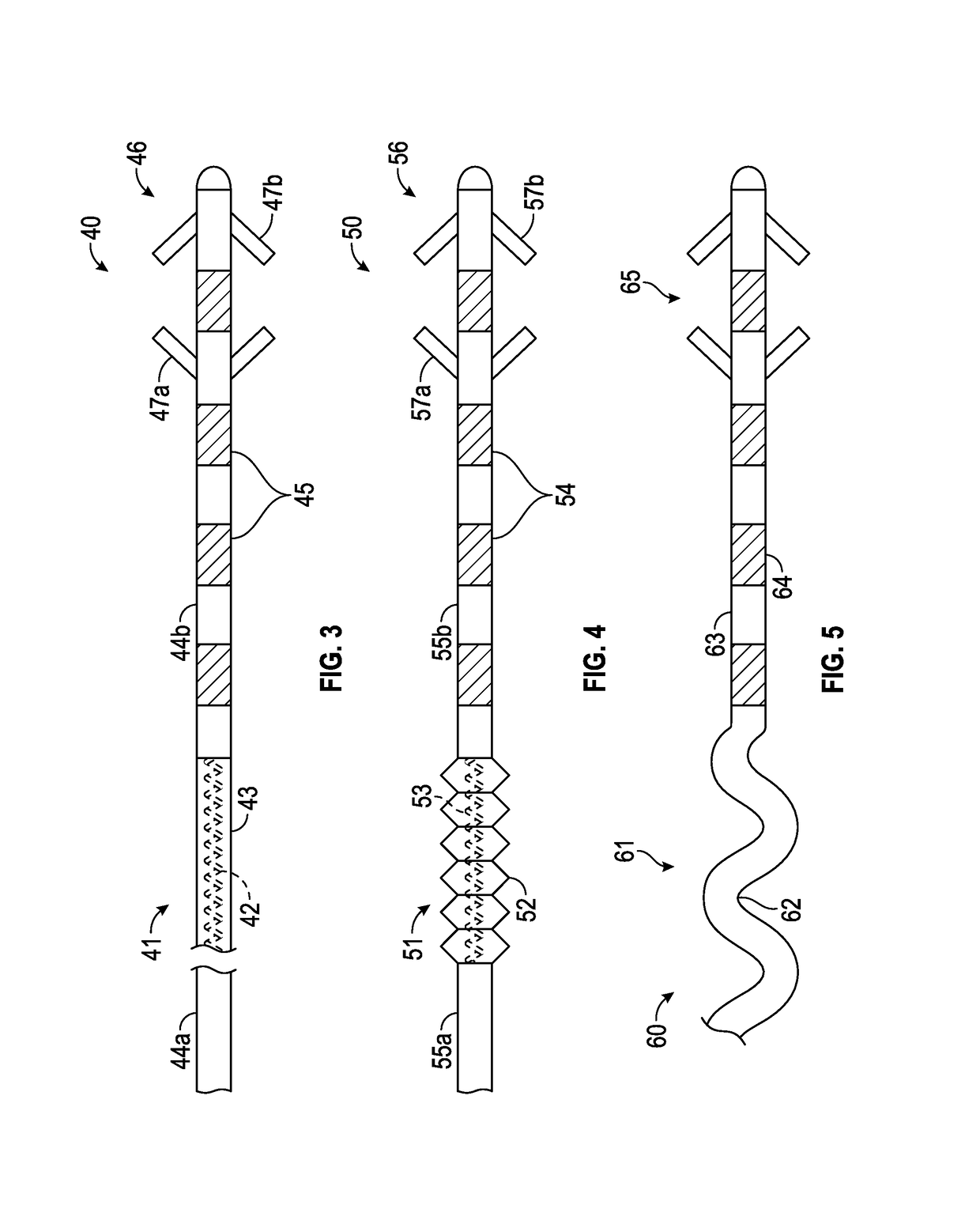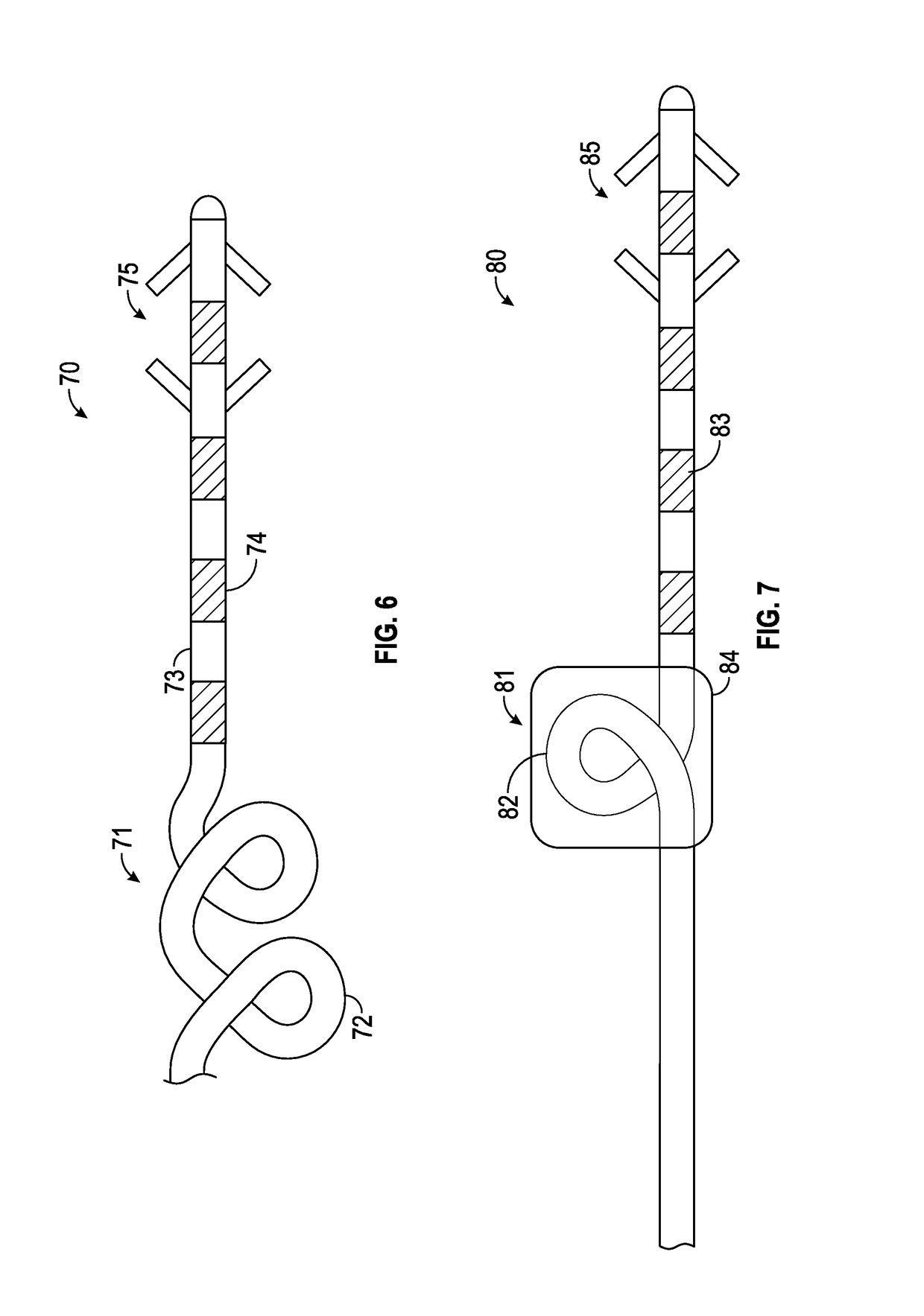Electrode leads for use with implantable neuromuscular electrical stimulator
a neuromuscular and electrical stimulation technology, applied in the direction of external electrodes, internal electrodes, spinal electrodes, etc., can solve the problems of significant lead dislocation, inability to provide an anchoring mechanism inside the spinal canal, and inability to effectively deliver therapy in such systems, so as to reduce the transmission of axial loads and reduce the risk of fatigue fractur
- Summary
- Abstract
- Description
- Claims
- Application Information
AI Technical Summary
Benefits of technology
Problems solved by technology
Method used
Image
Examples
Embodiment Construction
[0030]The neuromuscular stimulation lead of the present invention comprises a lead body having a strain relief portion and a plurality of electrodes configured to provide electrical stimulation from an implantable pulse generator to neuromuscular tissue located within a patient's back. The leads disclosed herein are particularly adapted for use in stimulating tissue associated with the lumbar spine for use in restoring muscle function and lumbar spine stability, while overcoming lead displacement and fatigue fracture issues observed with previously-known electrode lead designs.
Stimulation Lead with Strain Relief Portion
[0031]Referring to FIG. 1, exemplary stimulation lead 10 constructed in accordance with the principals of the present invention is described. Stimulation lead 10 includes proximal end 12, plurality of interior conductors 13, distal region 14, insulative sheath 15, electrodes 16, anchoring mechanism 18 including fixation elements 19a and 19b, and strain relief portion ...
PUM
 Login to View More
Login to View More Abstract
Description
Claims
Application Information
 Login to View More
Login to View More - R&D
- Intellectual Property
- Life Sciences
- Materials
- Tech Scout
- Unparalleled Data Quality
- Higher Quality Content
- 60% Fewer Hallucinations
Browse by: Latest US Patents, China's latest patents, Technical Efficacy Thesaurus, Application Domain, Technology Topic, Popular Technical Reports.
© 2025 PatSnap. All rights reserved.Legal|Privacy policy|Modern Slavery Act Transparency Statement|Sitemap|About US| Contact US: help@patsnap.com



